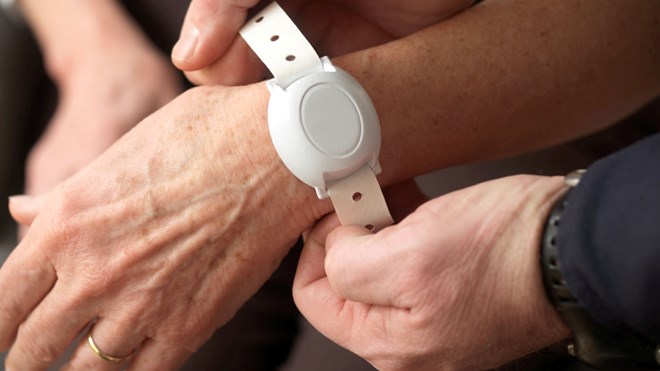With Sudbury's aging population, and efforts to allow people to live at home as long as possible, Greater Sudbury Police are applying for funding to take part in Project Lifesaver.
The project includes providing transmitters, receivers, wristbands, and batteries that track the location of people at risk of wandering away from home.
“The program provides timely response to save lives and reduce potential injury for adults and children who wander due to Alzheimer’s, autism, and other related conditions or disorders, by providing the technology and the training for a more efficient way of searching for these individuals,” says a police report on the program.
Greater Sudbury population is aging and the number of potential Alzheimer’s and Dementia sufferers also grows, the report said. That means there is a growing risk of people being reported missing with a need for search and rescue operations.
"It's Project Lifesaver, a recognized program that exists in Ontario, but I think it originated in the U.S.," Police Chief Paul Pedersen said this week. "I would akin it to a GPS bracelet that allows us, through receivers, to track where a person is. Specifically, we put them on, with consent of the caregivers, on those persons who have a preponderance to wander and go missing.”
Greater Sudbury also has large numbers of people who have autism, Down syndrome, and other health issues that could lead them to wander from home, meaning they must be found by police.
“The Alzheimer’s Society of Sudbury and the Autism Ontario Sudbury Chapter, among several other organizations, have shown interest in having a program like Project Lifesaver available in the Sudbury region and have been actively involved with the Greater Sudbury Police Service in ensuring that Project Lifesaver does come to Sudbury to help their clients,” the report said.
"It just allows us to reduce search times and save lives," Pedersen said. "In these cases, someone is at home being looked after by a loved one, and your back is turned and they wander out the back door.
"Before you're aware of it, they've covered a lot of ground and we have to look for them."
Police are also applying for funding to reduce the number of at-risk youth who run away from group homes. Police have received 450 calls already this year from the homes after young people miss curfew or have run away.
“The project proposes a Crisis Outreach and Support Team model for youth,” the report says. “Members of the Community Response Unit would take the initial call and where applicable, conduct the appropriate assessments and referrals.
“Resilience and violent threat risk assessment training would be afforded to the partners. The aim is to provide support and early intervention for youth through a multidisciplinary team aiming for more successful outcomes and reduced calls for service in response to missing persons. Clients will receive support or follow-up until either the difficulties have been resolved or the client has been linked to appropriate community resources.”



